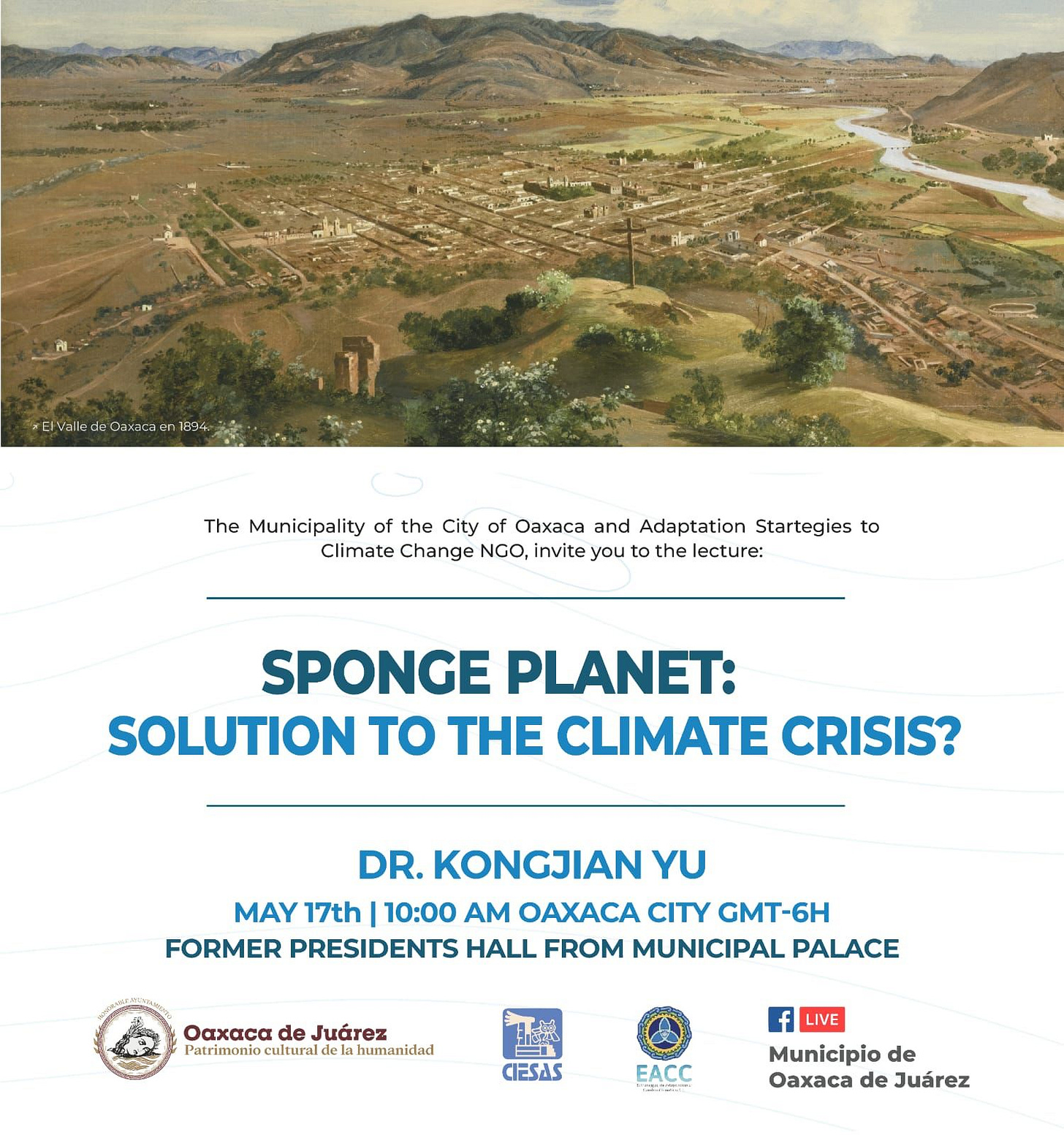Dear Friends,
I was inspired by Barrett Brooks’ vulnerable essay about taking a one-year sabbatical to explore a mid-life career change. Barrett was the COO at ConvertKit, a startup competitor to MailChimp that could have become the next Substack. After the thrill of building a successful startup, he began to feel “a certain emptiness in the work:”
The massive infusion of cash into the creator economy as the early pandemic raged on, the growing toxicity of social media, the egos in the industry, and the sometimes pyramid-scheme-like nature of creators teaching creators how to be creators had worn on me.
He wanted to do something different — perhaps related to climate change — but didn’t know exactly what, or how he could best contribute. Plus, he was held back, as he wrote, by “telling myself a story about being an “extremely important person” at a “highly successful company.” After experimenting with various roles, including at a premium coffee roaster and a renewable energy startup, he realized what he truly wanted to do: writing, podcasting, and coaching. But there was a tension between what he wanted to do and his fear of how he’d be perceived:
I’m scared of being seen as the kind of person who couldn’t build startups, so instead I coach people who can. I’m scared of being discounted, left out, and disrespected. I’m scared of being seen as a huckster. A fear rooted in being rejected for being me and having to transform myself into something unrecognizable to be accepted.
Such vulnerability from a technology executive, or anyone for that matter, is rare. At the same time, I imagine it can be unsavory to read about a well-connected, wealthy executive describing his dissatisfaction with a successful startup career. Which is why, as Barrett notes, there’s little written about the practical steps to transition from extrinsic success during the first half of your career to intrinsic fulfillment for the second half.
Piloting what’s next
My own (wonderful) coach has helped me explore not just my interests, but also the parts of me that are fulfilled by different roles and types of work. Here’s where I’ve landed so far:
Advancing liberal democracy: I remain committed to the painstaking civilizational project of promoting deliberation over tribalism, openness over authoritarianism, inclusivity over extraction, questioning over groupthink, and progress over stagnation. I want to support organizations that support liberal democracy. For now, that starts with a four-month consulting contract with Unite America to improve how elections work in the US. I’m also interested in supporting organizations that promote media literacy for young people, inclusion initiatives to integrate immigrants, and efforts to address socio-political polarization.
Becoming an engaged resident of my local community and ecosystem: I was moved by Gus Mitchell’s call to understand the history of my habitat “as told through soils, landforms, watersheds, native plants, and animals, and, finally, the inhabitant human cultures which have become adapted, over time, to life there.” For now, I’m learning about Oaxaca’s natural history and participating in Oaxaca’s Sponge City project to address water scarcity (during the dry season) and flooding (during the rainy season) by rebuilding natural habitats.
Co-teaching and researching at a local university: I hope to co-teach a course at the local public university this fall that includes fieldwork.1 I’m exploring co-teaching a fall course on public policy, which could include an analysis or evaluation of the Sponge City project described above.
Having fun with interesting people on bikes: Cycling is the activity that consistently gives me the most joy. It’s good for the environment, community-building, and physical and mental health. I want to help promote cycling infrastructure and safety, and support young cyclists, especially women. For now, my friend Hugh and I are planning a 5-day, high-altitude cycling camp in Oaxaca next January or February. Let me know if you’re interested in learning more.
A few months ago, I felt like I needed to pick between the four possible career paths listed above. I was 80% sure I wanted to open a cycling-themed cafe with rental bikes and custom tours. Now, I recognize that the four categories fulfill different parts of me.2 That doesn’t mean that I’m necessarily going to do all four simultaneously, and I don’t yet know how each category will materialize as a specific job or activity. But when I read over them, I get very excited about the second half of my career.
If you have any ideas, advice, or useful connections related to the above topics, please share them in the comments or reply to this email. As with all editions, I’m curious how it will read in 20 years when I reopen the Time Capsule as I near retirement. And who knows, maybe something here will prove useful to readers considering their own career transition. Finally, if you are interested in learning more about the Sponge City model to address flooding and water scarcity, the originator of the concept, Dr. Kongjian Yu, is presenting a webinar to Oaxacan policymakers and advocates on Friday (in English with Spanish subtitles). Send me a note and I’ll share the details.
🤔 Six provocative pieces
He Built an AI Model That Can Decode Your Emotions: How accurately do we label the emotions we are experiencing? Are emotions universal, or do they depend on our culture and language?3 Could AI help us more accurately detect emotions based on our facial expressions and tone of voice?4 Dan Shipper interviews Alan Cowen, the head of Hume AI, which uses machine learning to detect emotions in voice and facial expressions. Their demo is a real trip.
One Twin Was Hurt, the Other Was Not. Their Adult Mental Health Diverged: A new study of more than 25,000 twins in Sweden found that when one twin experienced trauma in childhood, they “were 2.4 times as likely to be diagnosed with a psychiatric illness as those who did not.” It’s the latest of a growing body of evidence linking childhood trauma to adult mental illness.
Why We’re Turning Psychiatric Labels Into Identities: An estimated 1.6% of the general population has Borderline Personality Disorder. When the DSM emerged in the 1980s, psychologists were sure they’d discover genetic and biomarkers for everything from personality disorders to autism and ADHD. Fast forward 40 years and social media has created a boom in the self-identification of neurodivergence and personality disorders while researchers debate whether the labels should even exist, as Manvir Singh writes in the New Yorker.
Is clinical psychology stagnant? Why hasn’t therapy become more effective since 1999 when Tony Soprano first met with Dr. Jennifer Melfi?5 Research psychologist Paul Bloom looks at why and whether that might change. (Makes me want to re-watch The Sopranos.)
Are We Talking Too Much About Mental Health? If you teach young people about depression and anxiety, are they more likely to become depressed and anxious? Ellen Barry explores the latest research suggesting mental health interventions at schools may be counter-productive (and the pushback it has prompted among counselors and mental health advocates).6
12 signs that you are mature in the eyes of psychotherapy: Does therapy work? I can only tell you that it has done wonders for me. My hunch is that it depends entirely on the quality and fit of your therapist.7 These 12 little descriptions of the emotionally mature adult from The School of Life reminded me how much I’ve matured emotionally over the past decade.
🎵 A Playlist
I don’t have a recommended album or playlist this week, but I could use one. What have you got for me?
Have a lovely week,
David
I was sold on co-teaching after reading a profile of Jill Lepore in which she describes the joy of co-teaching interdisciplinary classes with faculty from other departments. Not only does she learn from her co-instructor, but students benefit from the differing perspectives of two teachers grappling with the same subject.
Some patterns emerge from what may seem like four very different types of work:
Building community with others around a shared passion
Maintaining some personal autonomy from the demands of organizational bureaucracy.
The new podcast Getting Emotional explores “obscure emotions you may have felt, but had no idea there was a name for.”
GPT-4 helps people assess a difficult emotional situation better than 85% of humans. In a separate study, GPT-4 scored higher on Social Intelligence tests than 100% of UK-based psychology PhD students. And I’m sure researchers are already preparing their studies of OpenAI’s newest sci-fi model released yesterday:
Meanwhile, the happiness divide between happy conservatives and sad progressives is more pronounced than ever.
In another, longer piece for the New York Times Magazine last year, Susan Dominus looked at the mixed evidence as to whether therapy improves mental health
Some commenters on the Paul Bloom post I link to above point to research showing that the top 10% of therapists are vastly more effective than the bottom 75%.







I've had a lively email chain going with a group of friends about that Ellen Barry article for a couple weeks. The counterintuitive findings they present are interesting and important. Folks have brought up Scott Alexander's "Crazy Like Us" book review, especially its discussion of anorexia in Hong Kong (https://www.astralcodexten.com/p/book-review-crazy-like-us), as well as this post about the "loneliness apparatus" (https://www.careculture.is/the-loneliness-apparatus/).
Just found your blog. This post resonated with me! Now taking a career break due to health reasons - and am finding the importance of building community where I am residing and finding joy in writing again!